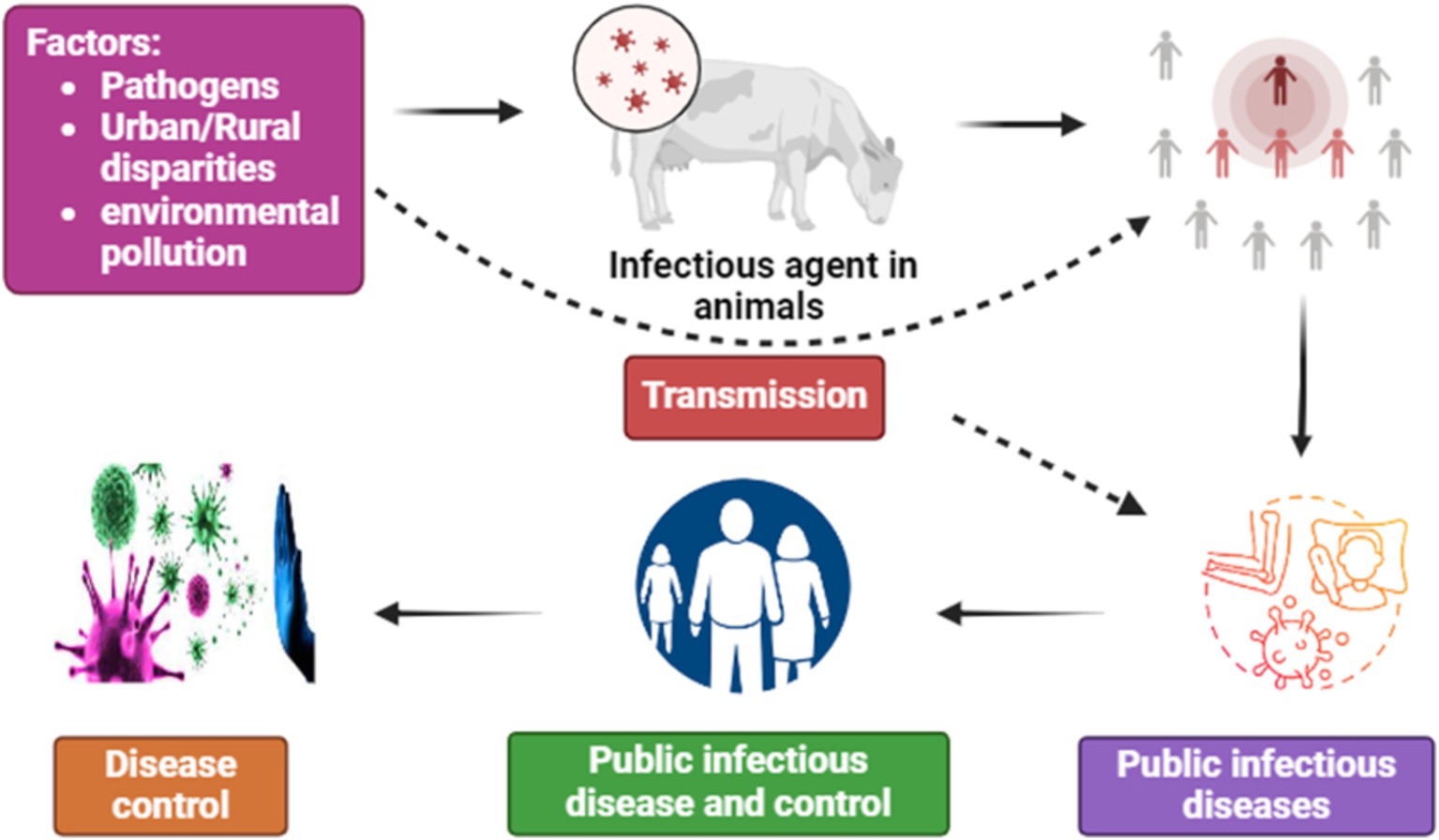The most contagious infectious disease on the planet revealed – The Independent

Report on Infectious Disease Transmission and its Alignment with Sustainable Development Goals
Introduction: Disease Contagion and Global Health
An analysis of infectious diseases reveals a direct correlation between transmission dynamics and the achievement of the United Nations Sustainable Development Goals (SDGs), particularly SDG 3: Good Health and Well-being. The reproductive number, or R-nought (R0), is a critical metric used to quantify the contagiousness of a pathogen. Understanding this value is fundamental to developing public health strategies that protect populations and advance global health targets.
- An R0 value greater than one indicates that an epidemic is likely to grow.
- An R0 value of one suggests the disease will remain stable and endemic.
- An R0 value of less than one signifies that the outbreak will likely diminish over time.
Controlling disease transmission is essential for ending the epidemics of communicable diseases, a key target under SDG 3.
Analysis of Highly Contagious Diseases and SDG Implications
Case Study: Measles (R0: 12-18)
Measles is the most contagious infectious disease, with an R0 value between 12 and 18. Its resurgence in recent years, even in high-income nations, presents a significant challenge to SDG 3. The primary cause is a decline in vaccination coverage, driven by factors that undermine multiple SDGs:
- Disruptions from the COVID-19 Pandemic: Strained healthcare systems impacted routine immunization programs.
- Global Conflict: Instability and conflict disrupt public health infrastructure, directly opposing SDG 16: Peace, Justice and Strong Institutions.
- Misinformation: The spread of false information about vaccine safety highlights a critical need for improved public health literacy, a component of SDG 4: Quality Education.
The high virulence of measles, which can be transmitted via airborne particles without direct contact, underscores the importance of robust and resilient health systems.
Other High-R0 Diseases
Other diseases with high transmission rates also threaten progress towards SDG 3. These include:
- Pertussis (Whooping Cough): R0 of 12-17
- Chickenpox: R0 of 10-12
- COVID-19 (variant dependent): R0 generally between 8-12
While often recoverable, these diseases can lead to severe complications such as pneumonia, meningitis, and death, reversing gains in public health and well-being.
Low Infectivity, High-Impact Diseases and Health Inequalities
Case Study: Tuberculosis (TB) (R0:
A lower R0 value does not equate to a lower threat. Tuberculosis (TB), caused by an airborne bacterium, has an R0 that varies based on socioeconomic conditions. This variability directly reflects challenges related to SDG 10: Reduced Inequalities, as outbreaks are more common among vulnerable populations in settings such as households in deprived areas, shelters, and prisons.
The difficulty in treating TB, which requires a minimum six-month course of multiple antibiotics, and the rise of drug-resistant strains, represent major obstacles to achieving the health targets of SDG 3. The disease’s ability to spread beyond the lungs further complicates treatment and impacts long-term well-being.
Other Low-R0 Diseases
Diseases with lower infectivity rates can still have severe consequences, posing a continued threat to global health security.
- Ebola: R0 of 1.5-2.5, a highly fatal disease spread through direct contact with bodily fluids.
- MERS, Bird Flu, and Leprosy: R0 values below one, but with potential for severe complications.
Strategic Interventions for Achieving Global Health Goals
The Critical Role of Immunization and Herd Immunity
Preventative measures, especially immunization, are a cornerstone of public health and are fundamental to achieving SDG 3. Vaccination not only protects individuals but also limits transmission within a community. This leads to herd immunity, a critical mechanism for protecting those who cannot be vaccinated, including:
- Infants
- Pregnant women
- Individuals with severe allergies or weakened immune systems
By achieving widespread immunity, societies can safeguard their most vulnerable members, thereby promoting health equity and contributing to SDG 10: Reduced Inequalities.
Conclusion: An Integrated Approach for Sustainable Health
Effectively combating infectious diseases requires an integrated strategy that recognizes the interconnectedness of the Sustainable Development Goals. Progress in SDG 3 is dependent on advancements in SDG 4 (Quality Education) to counter misinformation, SDG 10 (Reduced Inequalities) to address health disparities in vulnerable communities, and SDG 16 (Peace, Justice and Strong Institutions) to create stable environments where public health can thrive. This holistic approach, underpinned by SDG 17 (Partnerships for the Goals), is essential for building a healthier and more sustainable future for all.
Analysis of Sustainable Development Goals in the Article
1. Which SDGs are addressed or connected to the issues highlighted in the article?
-
SDG 3: Good Health and Well-being
This is the most prominent SDG in the article. The entire text focuses on communicable diseases such as measles, COVID-19, tuberculosis (TB), and Ebola. It discusses their transmission (R0 value), severity, and the critical role of preventative measures, particularly vaccination, in controlling their spread and protecting public health.
-
SDG 10: Reduced Inequalities
The article touches upon this goal by highlighting how certain populations are disproportionately affected by infectious diseases. It notes that TB outbreaks are more common among people in shared living spaces like “shelters or prisons,” indicating an inequality based on living conditions. Furthermore, it identifies “infants, pregnant women and people with severe allergies or weakened immune systems” as vulnerable groups who cannot receive certain vaccines and are more susceptible to infection, pointing to health inequalities based on age and health status.
-
SDG 16: Peace, Justice and Strong Institutions
This goal is relevant through the article’s mention of factors that undermine public health systems. It states that “global conflict” is a reason for declining vaccination rates, linking instability to negative health outcomes. It also points to the “spread of misinformation about vaccine safety” as a driver of this decline, which relates to the need for strong institutions that provide reliable and accessible public information.
2. What specific targets under those SDGs can be identified based on the article’s content?
-
SDG 3: Good Health and Well-being
- Target 3.3: “By 2030, end the epidemics of AIDS, tuberculosis, malaria and neglected tropical diseases and combat hepatitis, water-borne diseases and other communicable diseases.” The article directly addresses this target by discussing the spread and prevention of numerous communicable diseases, including measles, whooping cough, chickenpox, COVID-19, and tuberculosis. The central theme is understanding and controlling these diseases to prevent outbreaks and epidemics.
- Target 3.8: “Achieve universal health coverage… and access to safe, effective, quality and affordable essential medicines and vaccines for all.” The article strongly emphasizes the importance of vaccination as a key public health tool. The discussion about the “decline in childhood vaccination rates” and the need for “widespread immunity” (herd immunity) directly relates to the goal of ensuring universal access to vaccines.
- Target 3.b: “Support the research and development of vaccines and medicines for the communicable… diseases…” The text’s focus on the “protective power of vaccination” and the challenges of treating infections like drug-resistant TB implicitly supports the need for ongoing research and development of effective vaccines and treatments.
-
SDG 10: Reduced Inequalities
- Target 10.2: “By 2030, empower and promote the social, economic and political inclusion of all, irrespective of age… or other status.” The article’s focus on protecting vulnerable groups who cannot be vaccinated (infants, pregnant women, immunocompromised) through herd immunity aligns with this target of ensuring health protection for all, regardless of their health status.
- Target 10.3: “Ensure equal opportunity and reduce inequalities of outcome…” The mention that TB outbreaks “tend to occur among people who share living spaces – such as families, households, and in shelters or prisons” points to an inequality of health outcomes linked to socioeconomic and living conditions.
-
SDG 16: Peace, Justice and Strong Institutions
- Target 16.10: “Ensure public access to information and protect fundamental freedoms…” The article identifies the “spread of misinformation about vaccine safety” as a primary cause for declining vaccination rates. This directly challenges the goal of ensuring public access to accurate and reliable information, which is crucial for effective public health responses.
3. Are there any indicators mentioned or implied in the article that can be used to measure progress towards the identified targets?
Yes, the article mentions or implies several indicators:
- Childhood Vaccination Rates: The article explicitly states that a “primary cause” for the resurgence of measles is a “decline in childhood vaccination rates.” This is a direct indicator for measuring progress towards Target 3.8 and 3.b (specifically Indicator 3.b.1: Proportion of the target population covered by all vaccines included in their national programme).
- Incidence of Communicable Diseases: The article’s discussion of the “resurgence” of measles and outbreaks of TB implies the use of disease incidence rates (e.g., new cases per 100,000 population) as a key metric. This is a direct indicator for Target 3.3 (e.g., Indicator 3.3.2: Tuberculosis incidence per 100,000 population).
- Disease Transmission Rate (R0): The article extensively uses the R0 value to explain the contagiousness of diseases like measles (R0 of 12-18) and TB (R0 of
- Prevalence of Drug-Resistant Infections: The statement that “cases of drug-resistant TB are on the rise” points to the prevalence of antimicrobial resistance as a key health indicator. This measures the effectiveness of treatments and is relevant to Target 3.3.
- Prevalence of Misinformation: The article identifies the “spread of misinformation about vaccine safety” as a significant problem. This implies a qualitative or quantitative indicator related to Target 16.10, which could measure public trust in health institutions or the prevalence of false health information in media.
4. Summary Table of SDGs, Targets, and Indicators
| SDGs | Targets | Indicators Identified in the Article |
|---|---|---|
| SDG 3: Good Health and Well-being |
3.3: End epidemics of communicable diseases.
3.8: Achieve universal health coverage and access to vaccines. 3.b: Support R&D and provide access to affordable vaccines. |
– Incidence of communicable diseases (e.g., “resurgence” of measles). – Disease transmission rate (R0 value for measles, TB, COVID, etc.). – Prevalence of drug-resistant infections (“cases of drug-resistant TB are on the rise”). – Vaccination coverage (“decline in childhood vaccination rates”). – Level of population immunity (“herd immunity”). |
| SDG 10: Reduced Inequalities |
10.2: Promote inclusion of all, irrespective of age or other status.
10.3: Reduce inequalities of outcome. |
– Disproportionate vulnerability of specific groups (infants, pregnant women, immunocompromised). – Higher incidence of disease in specific settings (“outbreaks tend to occur… in shelters or prisons”). |
| SDG 16: Peace, Justice and Strong Institutions | 16.10: Ensure public access to information. |
– Prevalence of health-related misinformation (“spread of misinformation about vaccine safety”). – Impact of instability on health systems (“disruptions such as… global conflict”). |
Source: independent.co.uk

What is Your Reaction?
 Like
0
Like
0
 Dislike
0
Dislike
0
 Love
0
Love
0
 Funny
0
Funny
0
 Angry
0
Angry
0
 Sad
0
Sad
0
 Wow
0
Wow
0












































































